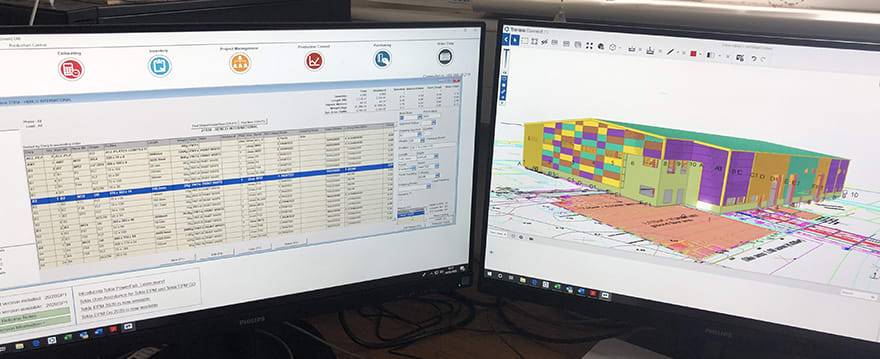Lancashire-based steelwork fabricator Wareing Buildings has been digitising its business with investment in a central information management system to help control, track and deliver jobs more efficiently.
Despite already employing digital technology and BIM within the company at the design stage of a project, including Tekla Structures, Tekla Structural Designer and the cloud-based Trimble Connect, the way Wareing Buildings actually managed its everyday activity, including the processing, tracking and delivery of steel fabrication jobs, remained a largely manual process.
Matt Hastwell, senior draughtsman at Wareing Buildings, explains: “It was clear that a change was needed – in fact, it was something that had been brewing for a number of years.
“While some areas of the business were already technologically advanced, such as our use of BIM modelling software, the practical, daily running of the business had various inefficiencies, with our teams relying predominantly on a disjointed and traditional paper-based system.
“We knew that we needed an information management system, through which all of our daily activity, including material ordering, fabrication schedules and deliveries, could be easily processed, managed and accessed.”
The company turned to Tekla PowerFab, which is used to manage material ordering and production control, with fabrication and work schedules also then generated using the software.
“All jobs are issued through the central system and sent to the correct division in our fabrication facility, whether that be steelwork, welding, painting or woodwork. It’s essentially a new central business hub, helping to bring all of our processes, data and information together in one place,” adds Hastwell.
In addition to material ordering and fabrication sequences, Wareing Buildings also applies PowerFab to the transport and logistics stage of its workflow, providing real-time information on what load are going on, to where and when. With such a high volume of steel passing through any fabricator’s production facility, there is the real potential for materials to be ‘lost’ along the way, especially if businesses are relying purely on an out-dated paper system.

Wareing Buildings also applies PowerFab to the transport and logistics stage of its workflow
Hastwell continues: “As a business, it aids improved levels of communication and coordination between teams, for everyone in the company can access the system and immediately see at what stage a particular job is at or view a department’s work schedule for the week.
Through the direct link with Tekla Structures, the company is also able to move around a project’s 3D BIM model, click on any steel section and be provided with an up-to-date job status. All teams have access to PowerFab through a smart device, meaning they can simply log once they have completed a job and the component’s status is then automatically updated.
“Before we introduced PowerFab into the business, if we needed to know the current status of a job, it would involve us having to physically walk around our site and speak to each team individually. Understandably, this could take up a significant portion of our day – time that could be better spent elsewhere,” says Hastwell.
“We also have a weekly forecast report, which automatically provides us with a status of every current job and even generates a view of the following week’s production schedule, enabling us to plan accordingly and ensure continued high levels of efficiency.”
Talking about the benefits Wareing Buildings has experienced since digitising its workflow with PowerFab, Hastwell says: “It has opened up lots of doors for small improvements within the business, areas that we may not have noticed or even been aware of previously. For example, we have recently added various quality control and inspection points within our welding, loading and painting departments, where team members will use PowerFab to monitor and record certain conditions throughout their workflow and a report will then be generated.
“Through this, we have been able to identify various areas needing improvement, make slight modifications to our processes, such as changing the way we dry our painted steel and even the paint product we use, and then monitor the results.”













